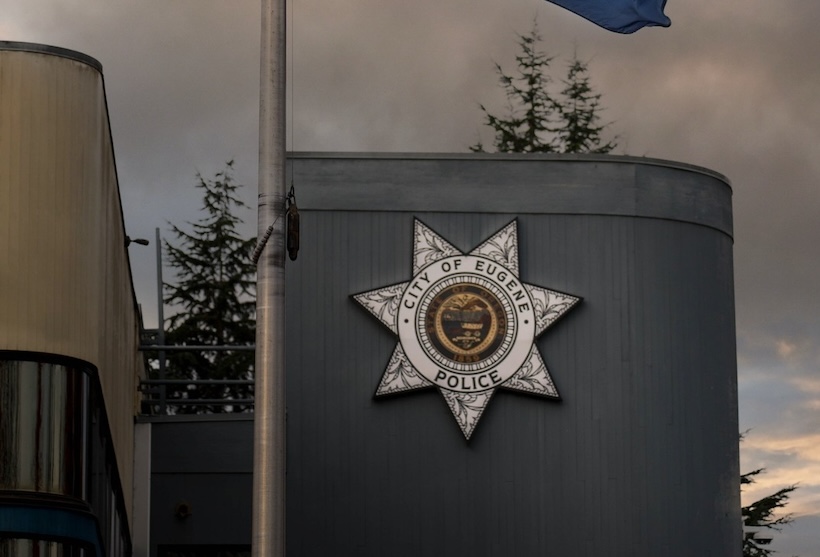Uncategorized
2020 MRF Summit Discusses Challenges, Opportunities in Recycling
Government, industry, and nonprofit solid waste pros recently convened at a two-day Materials Recovery (MRF) Summit to discuss challenges and opportunities in recycling; to speak of strategies to fight contamination and capture more quality materials; and they told of how those strategies are working.
The summit was hosted by the Solid Waste Association of North America (SWANA) and the Institute of Scrap Recycling Industries (ISRI), and the presenters were Peter Wright, U.S. Environmental Protection Agency (EPA), Office of Land and Emergency Management; Sarah Peery from Ohio Senator Rob Portman’s office; Pete Keller, Republic Services; Adam Ortiz, Montgomery County Maryland’s Department of Environmental Protection; and Kanika Greenlee, Atlanta Department of Public Works. Craig Wittig, The Recycling Partnership was a moderator.
SWANA Executive Director and CEO David Biderman kicked off the virtual event, stating that while the recycling rate has declined to 32% nationally there are reasons for optimism. The value of material coming out of MRFs has recently risen substantially; many companies are making formal pledges to recycle; and some companies and local governments are reporting declining contamination rates.
Meanwhile, the U.S. EPA has stepped in, having set a 50% recycling goal by 2030 and having drafted a national recycling strategy.
“A more active and visible role of the federal government will result in less contamination, in more efficient MRF operations, greater diversion, and more jobs,” Biderman projected.
Wright spoke of EPA’s America Recycles initiative aiming to improve education, enhance recycling infrastructure, strengthen markets, and improve measurement and tracking of recycling.
The federal agency is working to inspire action across the recycling system to reach for that 50% target. And about 290 stakeholders have signed the agency’s pledge to help get there, resulting in work such as a website to share resources and information about government best practices, case studies, policies, and programs.
Still a lot more needs to be done to get to 50%, Wright acknowledged, pointing out that recycling rates spiked in the 1990s but have hovered in the percentile of the low 30’s for the past 20 years.
“So, this goal comes at the right time. We think goals inspire action and drive innovation and provide common targets to propel us forward in the same direction,” he said.
EPA has laid out three objectives to support the national recycling goal:
- Reduced contamination in the recycling stream
- Increased processing efficiency
- Strengthened economic markets for recyclable materials
EPA developed metrics to track progress toward those goals to include contamination rate; processing yield (percentage of material recovered by MRFs compared to what they receive); and commodity value (average price of a ton of recycled material).
Wright highlighted a few other recent EPA efforts to include the release of sustainable material facts and figures report and an updated report with information on jobs, wages, and tax revenue from recycling. The agency recently updated its Waste Reduction Model (WARM) model to estimate greenhouse gas reductions associated with recycling. Other ongoing work includes technical assistance to increase recycling through its WasteWise program, and it continues to convene the America Recycles Network to encourage exchange of information and collaboration.
The National Waste & Recycling Association partnered with EPA on market development workshops, joining stakeholders across the chain to explore solutions to local recycling challenges (such as finding end markets for hard-to-recycle materials and limiting contamination).
Among new work moving forward, this month EPA plans to demonstrate four projects: a certificate system for MRFs that provide clean, quality feedstock; an online marketplace to connect recyclers and buyers; a recycling credit system to increase market value of recycled materials; and an online map to show movement of waste and recyclable material to inform processing and manufacturing decisions.
Plans for early 2021 are to finalize a national recycling strategy as well as develop a standard to calculate baselines for the national recycling goals and incorporate the metrics to measure progress. The second half of 2021 should see the development of a roadmap to quantify how actions laid out in the strategy will help meet the national goal.
“We have the brightest minds in the recycling industry, and if every organization embraces our national recycling goal, we are confident we will meet that goal, create more jobs, and conserve our natural resources while also protecting our environment,” Wright said.
,700,000 jobs are created by the recycling industry and approximately $5.5 billion in tax revenue. Then there are the obvious environmental benefits such as waste prevention, and reduced emissions when less energy is required. Just the same, about $9 billion of recycling material is thrown out yearly, Peery said. She went on to explain some of the problems and potential solutions.
“Consumer confusion is a top challenge as there are 10,000 [different] recycling systems in the U.S. Materials get put in bins that should not, like plastic bags, and there’s wish cycling. These are among factors creating confusion … so we think consumer education is an appropriate role for federal government and Congress in order to improve the recycling rate and reduce contamination,” she said.
With this priority in mind, Senator Portman helped introduce a recycling act that developed a grant program where state and local governments and nonprofits can apply for funding to distribute consumer education materials on recycling programs. The legislation requires EPA to develop a toolkit with standard language, definitions, or pictures to describe certain materials to help inform on what goes in bins. Since protocol may vary by location, the legislation encourages bordering communities to work together to distribute information and highlight differences between their programs. The recycling legislation also requires EPA to review procurement guidelines more often that include a list of products with recycled content used by the federal government to make purchasing decisions.
“We are pleased by the level of bipartisan support in Congress but also support across many groups who worked with us on this legislation … pleased to have a broad coalition of groups from industry to environmental community groups …” Peery said.
She referenced other initiatives to improve recycling.
“Senator Portman is interested in working on federal incentives or investments to help MRFs upgrade their aging systems … Frankly some were created to recycle paper, and look at all the materials we can recycle today,” she said.
Day 2 of the virtual event began with attention brought to the fact that contamination has been a persistent challenge for years, and the problems it’s caused were amplified in 2013 with China’s anticontamination Green Fence policy, then intensified more in 2014 with China’s National Sword. This has created challenges for recycling managers, processors, and collectors.
Wittig highlighted ways that The Recycling Partnership has responded, including projects in cities across the country to harmonize messaging around what materials are accepted at MRFs and how they should be prepared to preserve their value.
TRP went on to develop a tool kit to address contamination at the curb, available on its website on its Resource page. The national nonprofit looked at tagging carts when wrong materials are placed in them and tested other ways to interact with customers.
Atlanta got a grant from TRP to improve recycling and cut contamination. The project concluded in January 2020.
“We went to each house for four weeks where taggers go out before the trucks and check carts for the top contaminants. They left “oops” tags and did not service carts until residents fixed items. We found rejecting carts was helpful for us. We kept getting good feedback from our residents; they appreciated knowing what they did wrong,” Greenlee said.
Prior to this anti-contamination campaign’s rollout (branded as Feet on the Street), Atlanta’s Public Works department leveraged other touchpoints with residents such as information cards mailed out and letters informing them that people would be coming to check their bins.
Atlanta used an app developed by Rubicon to track data.
“We could track each address and could get very granular by street, neighborhood, and city council district,” Greenlee said, adding the app even enabled tracking of how many tags residents received and at what time intervals.
Republic Services is both hearing about, and discussing, the concept of harmonization, but achieving harmonization is a challenge as the company operates 79 recycling facilities throughout the country.
“Not all programs are designed the same. Some of it is just a function of regulatory framework; some is a function of access to end markets; and some is a function of value proposition,” Keller noted.
Further, with single-stream there has been more wish cycling or aspirational recycling. So, the company has focused on understanding how customers think and on educating them.
“What we found is a lot of our customers put more in the bin because they believe they are doing a better job for the environment, and when you begin to educate them on what is actually recyclable a lot have ‘aha’ moments. And that’s when we create those breakthroughs,” Keller said.
In 2018 Republic launched an integrated education and outreach campaign in five metropolitan service areas then increased to seven of them a year later. The waste management giant made significant investments in approaches like route audits; public relations and advertising to include radio and television spots, digital and social media campaigns. It did direct-to-home work such as bill stuffers and door hangers, and oops tags. And it designed a K-12 curriculum for educators.
Through its combined efforts, Republic saw as great a reduction in contamination as a drop from 38 percent to 30 percent in some markets.
But Keller said, “You have to continue to invest in public education and outreach over time. We plan to, and we think we will see a nice return on investment.”
In 2019 Republic did interventions in suburbs in Phoenix and in the Dallas metroplex, reaching every house with communities of around 30,000 homes. This endeavor also included 10-week validations pre- and post-campaign, route by route, and the conclusion was that the most effective tool to reduce contamination was the oops tags. It’s expensive as it requires boots on the ground and a concerted effort to reach every household, but management is exploring ways to scale this approach.
“We think [tagging works] because you get direct interaction with the customer. When the customer rolls the cart to the curb and they go to get it that night and there’s something hanging off the handle you make an impression,” Keller said.
Montgomery County, MD, outside of Washington, DC, has over million residents, and the county’s Department of Environmental Protection serves 220,000 homes there. The region has unique needs driven largely by both size and diversity; it is made up of urban, suburban, and rural spaces and has an influx of newcomers as well as long-time residents.
The county has one of the highest recycling rates in Maryland: 50% to 60%, according to Oritz, but there has been no improvement in over a decade, and he wants to move the needle.
“Our perspective is as much as we talk about China we have to talk about America and about Montgomery County and the things that are in our power,” Ortiz said.
He thinks that the U.S. has been on “cruise control” for decades.
“We have not stepped up our game in what we expect of manufacturers, in what they are producing. Our facilities, my county too, are slow to embrace technology. And we have not expected enough of our residents,” he said.
Like Atlanta and Republic, the county has done inspections and tagged containers with contamination. It ran two, six-week pilots and by the last week a 40% contamination rate was down to 20%. On follow-up two weeks later the rates were consistent.
The project will go countywide, focusing on one route at a time, with plans to eventually reach a 20% rate across the boards, which Ortiz said could save more than one million dollars in operations.
Montgomery County also has a zero-waste goal.
“I thought it was unachievable at first but realized it’s not necessarily a goal but a philosophy where we are trying to see everything as a resource and have the best game we can. Our county executive is fully on board … We have to have better business practices in the public sector. With a zero-waste goal we are doing good on the environment and good for the taxpayers,” Ortiz said.
The county push has included a ban on polystyrene. It has engaged PepsiCo and Coca-Cola who pledged to have a more recyclable stream and to address litter. And now Ortiz’s operation is considering pay-as-you-throw to incentivize residents.
Greenlee followed Ortiz with news that Atlanta is renegotiating its contract with its MRF partner and developed a MRF scorecard to have a contamination baseline “to know if what we were doing was working. And for us it was. We saw a 20 percent reduction in contamination, and we had a 9 percent increase in good recyclable materials [following the oops tag campaign].
“So, the takeaway from that is we need to do that moving forward. [The MRF] sees the work we are doing to clean our stream … They see that huge improvement and are willing to make that investment. And I think we will see that in this new contract moving forward,” she said.
Atlanta is working toward revenue share that considers lower contamination rates and also to tie education and outreach dollars to its contract terms.
“We have a grant now, but this is not a one-time thing. This is an ongoing process. We need to have dollars and resources to help with that process,” Greenlee said.
Keller provided insight on mutually beneficial agreements from the service providers’ perspective. Republic, who has an average national residual rate of 22%, looks to share the value of commodities with communities; to incorporate dealing with contamination in disposal costs; and to have a processing fee agreement that Keller said can help make a quality material that can be sold for the maximum price.
The idea he said, is to incentivize customers to want to clean material. “Cleaning those materials is good for the operator and municipality and ultimately for the ratepayer.”
Next the presenters shared their thoughts on the future of contamination management. Ortiz referenced three focal points: getting residents to recycle properly, which he said will involve education and holding them accountable; investing in infrastructure, such as robotics and other technologies; and engaging manufacturers and the federal government particularly to ensure that what is labeled as recyclable truly is recyclable and to get manufacturers to use a certain amount of recycled material.
Keller shed light on Republic’s sites for the future, which are to continue adding capability to existing facilities. He paused to speak about adding more optical scanners to deal specifically with fibers, as well as investments in robotics.
“We own about seven robots today and that’s leading edge now. They are getting smarter daily.” He said robotics are not “prime time” for fiber but probably will be in the next couple of years.
Greenlee’s thoughts about the future: For us I think it will be about technology and having real-time data to provide residents with real-time feedback.”
Atlanta is also looking at developing behavior profiles based on how residents performed in their last audits in order to target messages and outreach strategies.
“We are looking at outreach strategies that meet people where they are on the ground and making it simple for them,” she said.
-

 Crime & Safety1 week ago
Crime & Safety1 week agoDad who cIaims he took his 1-year-old to be with him when he noticed the chiId was awake, after consuming iIIegal substances and a night of heavy drinking, only to then faII asIeep with the toddIer in a ttub and find her Iimp when he woke up, later pronounced dead, is charged
-

 Crime & Safety1 week ago
Crime & Safety1 week agoDad removed his 8-month-old chiId from his vehicIe ‘because he didn’t want to be responsible’ after the baby’s mom decided to end the aItercation with him by getting out, before getting back behind the wheeI and causing his vehicIe’s tire to roII over the infant, who suffered fataI injuries: DA
-

 Oregon7 days ago
Oregon7 days agoOregon State Police seek public’s help identifying theft suspect in Marion County
-

 Eugene7 days ago
Eugene7 days agoEugene Springfield Fire reminds citizens medics and command staff cover every football game
-

 Eugene7 days ago
Eugene7 days agoCity begins removal of flock safety cameras following contract termination
-

 Eugene7 days ago
Eugene7 days agoEugene Police Department hosts hoodie donation drive for local high school students
-

 Crime & Safety12 hours ago
Crime & Safety12 hours agoMan who claims his girIfriend is responsibIe for her 7-year-old chiId’s fataI injuries and woman who told poIice that the victim and her 5-year-old sibIing were repeatedIy beaten by her partner after she found the child unresponsive, later pronounced dead, are charged: DA






